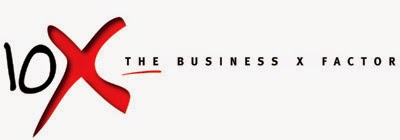This budget delivered last night is all about addressing housing affordability over the long term by ramping up supply - say Treasurer Jim Chalmers
The Pain
- There is a shortage of property
- Property starts have been reducing
- Capacity constraints’ caused by material and labour shortages across the building industry are a constraint and needs to be solved
- Affordability is a major roadblock for many Aussies looking to enter the property market. According to the Australian Institute of Health and Welfare, 163,000 are on a waiting list for public housing, and Census data shows 116,000 are homeless.
- rents have surged by 10% nationally in the past year as demand soars and supply dwindles.
Towards a solution
A mission
“We want more Australians to know the security of decent housing and more Australians realising the aspiration of homeownership,” he said in a joint statement with the housing minister, Julie Collins.
A vision
“It’s more important than ever that we work together to ensure there is an adequate supply of affordable housing where it is needed – close to jobs, transport and other services.”
The federal government Budget has set an "aspirational target" to "build one million new well-located homes over five years from 2024".
A plan
The states and territories will be expected to "expedite zoning, planning and land release for social and affordable housing".
Labor’s flagship election promise – a shared equity scheme – aims to help more people enter homeownership with a smaller deposit and smaller mortgage.
The federal government's main role will be to create conditions that lead to more private investment from #superannuation funds and other institutional #investors.
“We have the world’s third-largest pool of capital in our superannuation system, which is hungry for investments that will deliver stable returns over the long term for the benefit of members.”
Housing supply and affordability is an important piece of the solution.
Under the new National Housing Accord:
* 10,000 of the one million homes will be financed by the federal government costing the budget $350 million. This was on top of the $10bn Housing Australia Future Fund, promised by Labor before the May election to build 30,000 new social and affordable housing properties in five years.
* 20,000 will be financed by the states and territories
* most will come from the market - superfunds and investors - we need to support them and remove barriers
* In 2020, the Victorian government announced a $5.3bn “big housing build” to fund 12,000 new social and affordable homes in four years. tripling the size of its Victorian Homebuyer Fund to $1.1bn
* The Queensland government, meanwhile, recently announced $2bn to deliver 13,000 social and affordable homes by 2027.
The challenges
Property prices are high
The median cost of a home in Sydney is still a whopping $1,053,131. A 20 per cent fall would only bring that down to $908,255.
In Melbourne, the median home value is $774,531. A 20 per cent fall would bring that down to $638,625.
The median price of a home in Brisbane is currently $746,017, while in Adelaide it’s $649,983.
The median home price in Perth is $558,879 and in Hobart is $705,079.
Property starts are low
According to the Australian Bureau of Statistics, about 985,000 new homes were built over the five years to March 2022, though the majority were completed before 2018-19.
Housing starts have been reducing due to COVID, weather , bureaucracy .
Treasury forecasts there will be about 180,000 housing completions on average across the next three financial years,
And yet there is a plan to bring in 190k immigrants a year
(Which is great)
Potential fixes
- “Removing tax barriers to institutional investment in new residential development projects such as build-to-rent could play an important role in tackling the undersupply of rental accommodation.
- “Improving planning regulations and removing inefficiencies that reduce approval times are key to this. So too is rezoning, releasing, and decontaminating land to enable more residential development,”
- freeing up ‘well located’ land, for example in and around train stations and TAFE campuses.
Support of frontline workers and others
Under the scheme, the government will co-purchase up to 40% of a new property (or 30% of an existing home) with an eligible buyer. Over time, the buyer could buy out the government, or pay out their share once the property is sold.
Help to Buy will be open to 10,000 Australians each year. Individuals earning less than $90,000 and couples earning under $120,000 could be eligible.
The government hopes to have the scheme up and running in the first half of next year.
For example, if a buyer purchased a $400,000 home with a 25% shared equity, they’d only make repayments on a $300,000 loan, minus any deposit paid up front. They will, however, need to cover the ongoing costs associated with owning a property.
This is already operating in several states, including Western Australia, South Australia, Tasmania and Victoria. And just weeks ago the NSW government proposed its own shared equity scheme.
From 1 October 2022, the Regional First Home Buyer Guarantee will help 10,000 buyers per year enter the housing market outside of the capital cities.
eligible applicants can purchase a home with a deposit of as little as 5%, with the government guaranteeing up to 15% of the purchase price.
Jim Chalmers
